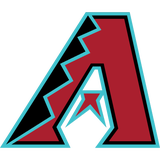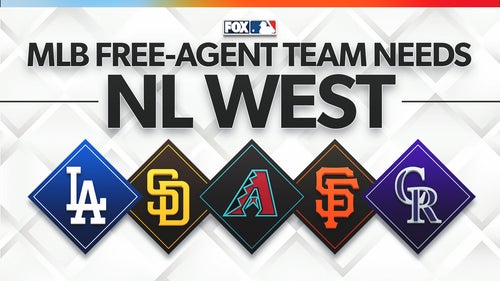
Mike Bolsinger, the Dodgers soft-tossing savior
It’s been suggested in more than one quarter that the Dodgers need another top-notch starting pitcher. Sure, Kershaw and Greinke are fine and dandy, but whatever shall the Dodgers do after that dynamic duo?
OK, so I won’t minimize the Dodgers’ organizational priority; not after both the general manager and the manager underlined this priority. Still, I think at least some of the loose talk about the Dodgers’ needs is informed by at least a tinge of skepticism about Mike Bolsinger, who’s essentially been the team’s No. 4 starter since late April.
This was not the plan.
When the Dodgers acquired Bolsinger last November – more on that in a moment – he was just organizational depth. These days, every team with the budget likes to park three or four replacement-level starters in Triple-A, since there’s approximately zero chance that everybody in the Opening Day rotation will stay healthy and effective all season long. This went double for the Dodgers, whose Opening Day rotation included oft-injured Brett Anderson and oft-injured Brandon McCarthy.
But nobody outside of maybe Gabe Kapler was counting on anything from Bolsinger in 2015.
The Diamondbacks drafted him in 2010. In the 15th round, which isn’t typically a productive round. Baseball America did not rank him among Arizona’s 30 best prospects in 2011. Or 2012. Or 2013. Or 2014.
In 2012, the "Prospect Handbook" did mention Bolsinger as the organization’s fifth-best right-handed, relief-pitching prospect, sandwiched between Chris Odegaard and D.J. Johnson.
In 2014, the "Prospect Handbook" mentioned Bolsinger again, this time as the Diamondbacks’ 11th-best right-handed-throwing, relief-pitching prospect, sandwiched between Charles Brewer and Kyle Winkler.
Have you ever heard of Chris Odegaard or D.J. Johnson or Charles Brewer or Kyle Winkler? If so, congratulations! You’re officially qualified to work at Baseball America!
Somewhat unaccountably, Bolsinger actually reached the majors and even lost his rookie status – and his eligibility for everyone’s prospect lists – last season, pitching 52 innings with the Diamondbacks. Then the Dodgers purchased his contract a few weeks after the World Series. Before this season, FanGraphs’ Kiley McDaniel ranked Bolsinger ninth among the Dodgers’ “27 & Under Big League Assets” (which is a pretty nifty category, by the way) ... right between Paco Rodriguez and Chris Withrow, both of whom, at the moment, are recovering from elbow surgery.
OK, so now’s the part where you might be wondering what Mike Bolsinger’s done to deserve all this attention. From me, I mean.
He’s done really well this season. In 15 starts with the Dodgers, Bolsinger’s 5-3 with a 2.79 ERA. In 84 innings, he’s given up only three home runs.
You might be wondering why someone who’s pitching so well this season for a first-place team was discarded last November by a last-place team.
Bolsinger doesn’t throw hard. Relatively speaking, he throws soft. He’s not pitched enough innings to qualify for leader boards. But his average fastball (87.3 mph) would rank 92nd in the majors, between Tim Hudson (87.9) and Chris Young (86.2). Also, he gave up a lot of runs with the Diamondbacks last season: 36 in 52 innings. And it seems management might not have really noticed that Bolsinger was a groundball pitcher who, despite throwing relatively softly, struck out nearly three times more batters than he walked. But then it does seem that the Diamondbacks sometimes don’t see value the same as others might.
We shouldn’t pick on the Diamondbacks, though. When they designated Bolsinger for assignment last season, 29 teams had a shot at him. It seems nobody but the Dodgers was particularly interested.
You might be wondering how a complete non-prospect like Mike Bolsinger happens to be pitching sorta like an actual star this season. As I mentioned above, Bolsinger’s a groundball pitcher. His 57.6 groundball percentage would rank sixth in the majors, behind (again) Tim Hudson, and just a hair above Felix Hernandez. As I also mentioned above, last season Bolsinger’s strikeout-to-walk ratio was nearly 3 to 1. Well, it’s exactly the same this season.
Last month, Eno Sarris did some interesting work on Bolsinger’s repertoire of pitches, and how that might have changed this year. On the other hand, qualitatively he doesn’t seem to have changed much at all. His strikeout-to-walk ratio’s practically identical, and his groundball percentage is up just a tick or two. The difference in his ERA can be explained almost completely by his HR/FB going from abnormally high (16 percent) with the Diamondbacks to abnormally low (five percent) with the Dodgers.
One way or another, Mike Bolsinger simply seems to be one of those few pitchers who can thrive in the major leagues without throwing hard, even by minor-league standards. And it’s probably not a great coincidence that the Diamondbacks didn’t want him and the Dodgers did.
Oh, and one more thing? The Dodgers acquired Bolsinger in exchange for "cash considerations," which is a really weird way of saying they paid for Bolsinger before he was actually released. Typically, these exchanges range anywhere from $1 to $100,000 ... which, these days in Major League Baseball, both are equivalent to approximately zero dollars. The first-place Dodgers got their No. 4 starter for the price of a song that's in the public domain.



